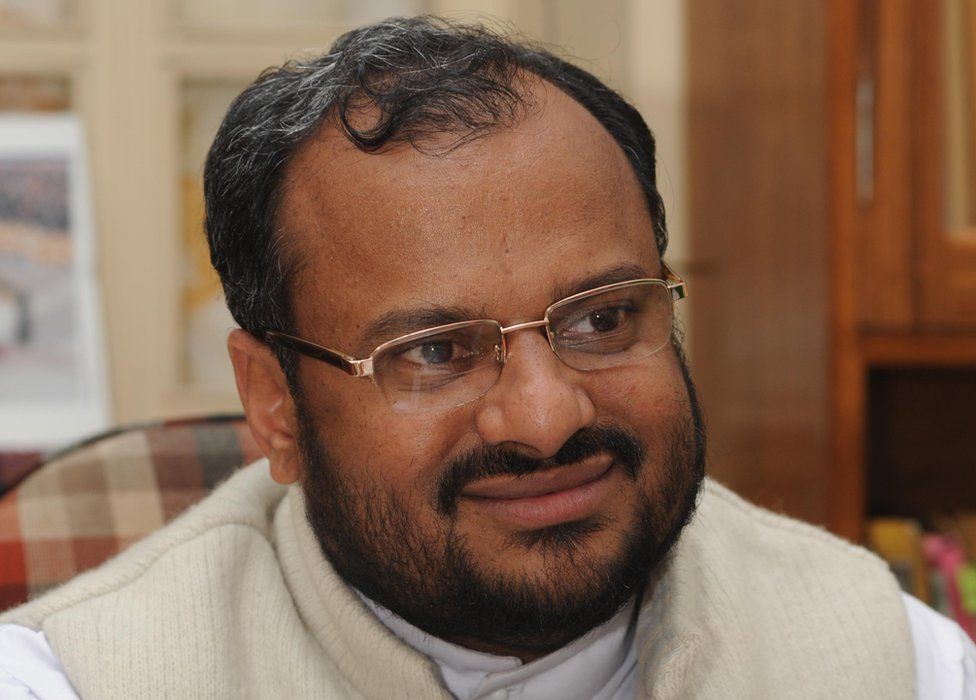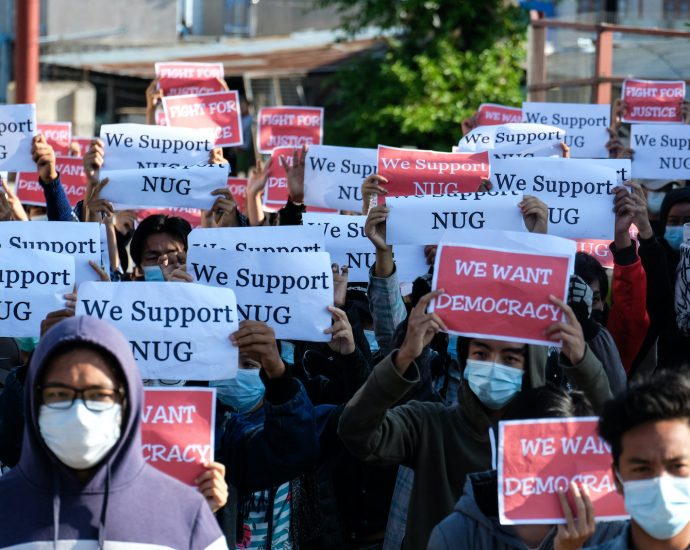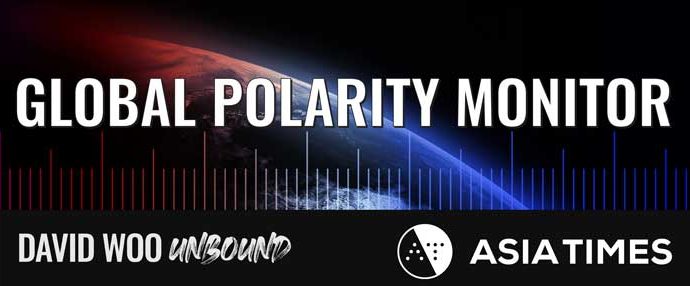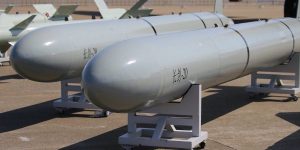New cryptocurrency licensing rules kick in for Hong Kongâs retail investors

Hong Kong Monetary Authority chief Eddie Yue said the city wants to give the industry flexibility to develop, innovate and create an ecosystem.
However, that does not mean a light-touch regulation.
In fact, Prof Aris said he believes the new rules allow Hong Kong to fill a void left behind by a series of meltdowns in the west.
“At the point of lowest confidence, is when you can instil more confidence in investors by showing them that it is safe to trade these assets in Hong Kong, because they are well regulated,” he said.
“There is room for Hong Kong to step in and become an international hub in the trading of virtual assets.”
ATTRACTING GLOBAL INVESTORS
Overseas investors such as Mr Chen Zhuling, who runs a Singapore-based blockchain company, is also eyeing a slice of the pie.
His firm is looking at potentially offering staking services in the city, as its crypto space grows. Staking is a way for crypto holders to earn rewards on digital assets.
“Hong Kong is never short of sophisticated funds and investors. So that’s going to have a great inflow into the crypto space,” said Mr Chen, the chief executive officer of RockX.
“After the crackdown of Signature Bank and Silvergate Bank, there are no efficient on-ramp, off-ramp services globally. (This is) where after the licensing, banks will be more comfortable to serve that need.”
More than 80 companies, including major crypto exchanges OKX and Huobi, had expressed interest to operate in the city even before the new laws kicked in.
Prof Aris said he believes these movements signal a growth trajectory, one that the Hong Kong is preparing to meet as it steps up recruitment of fintech professionals.
Another UN Myanmar envoy bites the dust
United Nations Special Envoy to Myanmar Noeleen Heyzer is leaving her position in mid-June after some 20 months of being stonewalled by the generals of the State Administration Council (SAC).
Heyzer always faced an insurmountable challenge since being appointed to the position in October 2021, just eight months after the SAC’s military coup d’etat sparked a major nationwide uprising.
The knives will likely be out for Heyzer. Inevitably, death by a thousand tweets, social media cancellation and mob frustration will denounce her efforts before a more objective assessment could, and should, take place.
None of these angry denunciations should be dismissed or derided: they register intense frustration inside and outside Myanmar at the international community’s collective failure to goad the junta into relinquishing power and restoring democracy.
But under these conditions, neither Attila the Hun nor a K-Pop band would have any real chance of something approaching a breakthrough.
And what would “success” for an envoy entail? The SAC surrendering? Freeing Aung San Suu Kyi? Achieving what she always, consistently, called for – a cessation of hostilities and ending daily abuses against civilians?
Heyzer is not responsible for any of the regime’s atrocities and was increasingly critical of them. However, more than Heyzer herself, two groups should be blamed for the lack of progress since late 2021: the SAC and the UN.

It was apparent early into Senior General Min Aung Hlaing and his SAC’s reign of terror that they had no interest in outside mediation. Heyzer was only permitted to visit once to meet the SAC leader in August 2022 and the balanced assessment of her short visit would be “unmitigated disaster.”
It didn’t help that the envoy wore a khaki-colored htamein (sarong), to which the semiotics-obsessed Myanmar political culture interpreted as a sop to the generals. State media running photos of grinning generals and Heyzer didn’t go over well either.
But in an exchange of statements, the first from Heyzer, the second from the SAC, a line-by-line refutation of her points, made it clear that there was little chance of a meaningful recovery.
Heyzer’s points were mostly consistent and principled: de-escalate violence, release political prisoners, permit unfettered humanitarian access and engage in multi-stakeholder talks.
They adhered closely to previous statements and other international efforts, and under the circumstances highly unlikely to produce any meaningful progress for Myanmar people on the ground.
The rebuttal a few days later in the state-run Global New Light of Myanmar was vintage Myanmar military obduracy. The counter-statement started with “the one-sided statement of the Special Envoy created misunderstandings about Myanmar by the international community and the public and thus, the discussions of the meeting are fully described.”
In Min Aung Hlaing’s transcribed words, he told Heyzer “I have been serving as commander-in-chief of Tatmadaw (military) since 2011, which turns 11 years. Through the experience received during these years, I regret to observe that the statements by the United Nations are one-sided.
“Accordingly, I am of the view that you, in your capacity as the special envoy of the Secretary-General on Myanmar, should overcome this issue as a priority… (t)o improve the relations between Myanmar and the United Nations, we have constructively engaged with the Special Envoy of the United Nations Secretary-General on Myanmar. I do not have any personal feelings for you. With the aim to cooperate with the United Nations, I have agreed to meet you.”
The general went on to fully deny any human rights violations: “(w)e are just targeting the location of the insurgents who attack security forces and counter them. We will never initiate the attack if there is no attack on us. And there is no government and country in the world that accepts armed attacks. I categorically reject the allegation of burning the villages and houses of the people. The Tatmadaw always protects the people of Myanmar.”
With a first meeting going that poorly, the SAC was clearly stating they had little inclination to be availed of the envoy’s entreaties. But the failure of diplomacy and engagement is a systemic United Nations failure, not an individual one of Heyzer’s.
If anyone deserves a red card for failing Myanmar since the first day of the coup, it is UN Secretary-General Antonio Guterres. When you have a poorly performing leader, an utterly dysfunctional Security Council, a bloated and bloviating General Assembly and multiple corrupt agencies competing for donor funding by inflating not just budgets but the actual ability to operate within Myanmar, casting blame on an individual envoy is grossly dishonest.

In carefully assessing Heyzer’s time in the job, the regular meetings of UN agency heads in Naypyidaw, always made public by the SAC’s propaganda machine, undermined Heyzer’s approach.
Security Council Resolution 2669 in December 2022 established the limits of UN influence, and said loud and clear, as voluminous and coherent as consensus exercises can ever get, that you have the UN special envoy and the Association of Southeast Asian Nations (ASEAN): that’s it.
Which translates to, we won’t put any more effort in than we already have. The SAC presumably knows this, especially when out of the 15 votes, China, Russia and India abstained.
And last, Heyzer had to contend with a rambunctious UN Special Rapporteur on Human Rights, Tom Andrews who has far exceeded his mandate as an “independent expert” and at times saw himself as the real special envoy to Myanmar.
On principle, Heyzer seemed an apt choice. A Singaporean social scientist, former head of the UN’s regional office in Bangkok, ESCAP, she seemed more amenable to the generals than her Swiss predecessor, or some of the previous envoys who enjoyed mixed success in very different circumstances.
But the SAC simply wasn’t interested in chit-chat, with Heyzer or ASEAN’s Five Point Consensus. They seem to only have time for Russian and Chinese officials, or the mendacious Japanese meddler Yohei Sasakawa.
Pundits will now be speculating on a suitable replacement for Heyzer. But should there be an entirely new approach to Myanmar? The envoy may have only made one visit to Myanmar, but she met with regional states and visited China. Her failure was not in being idle, but rather being ineffective in an invidious situation.
Heyzer was actually starting to push the traditional boundaries of UN envoys’ risk appetite. Her call for an Inclusive Humanitarian Forum (IHF) to be developed with the opposition National Unity Government (NUG) and key ethnic armed organizations (EAOs) such as the Karen National Union and Karenni National Progressive Party (KNPP) was an imperfect but nevertheless refreshingly unorthodox approach to addressing the humanitarian crisis sparked by the coup.
In a March statement, Heyzer suggested: “(t)he Forum could comprise a core group of (UN) Member States, notably Myanmar’s neighboring countries and other regional actors, to engage inclusively in seeking a comprehensive assessment of ground realities and identify ways to overcome obstacles for operational actors to more effectively reach those in need…the IHF discussions with local actors have proven to be an important vehicle driving constructive discussions and building greater solidarity and coherence.”

It’s likely this proposal, obviously as much a political framework as a humanitarian coordination body, caused disquiet in the more conservative UN apparatus.
Going through the motions of another candidate and the squandered time of ‘giving them a chance’ should not be an option. The UN leadership should either take the position more seriously or drop the position altogether, and deploy the funding instead to supply healthcare and food to Myanmar’s suffering people.
But taking a more holistic view, international diplomacy on Myanmar has been an utter failure, as the West is clearly exasperated with the SAC’s obtuse disregard for reason.
Far from cheering “ding dong the witch is dead” at Heyzer’s departure, critics should be bracing for whatever potential appeasement of the SAC lays ahead from a distracted and morally hollow international community whose muscle memory seems increasingly set to re-engage the abusive, coup-installed regime.
David Scott Mathieson is an independent analyst working on conflict, humanitarian and human rights issues on Myanmar
iPhone in India: Foxconn to manufacture smartphones in Karnataka by April 2024
 Getty Images
Getty ImagesApple’s biggest supplier Foxconn will start manufacturing iPhones in the southern Indian state of Karnataka by April next year, the state government has said.
The project will create around 50,000 jobs, it said.
Taiwan-based Foxconn manufactures the majority of Apple’s phones.
The firm has been making older versions of iPhones at a facility in the neighbouring state of Tamil Nadu since 2017.
Last month, the company announced it had bought 1.2m sqm (13m sqft) of land near Bengaluru city in Karnataka.
Bloomberg reported Foxconn planned to invest $700m (£566m) on a new factory in the state. On Thursday, the Karnataka government said the project was valued at $1.59bn.
Land for the factory would be handed over to company by 1 July, it said in its statement.
According to Reuters, Foxconn has set a target of manufacturing 20 million iPhones a year at the plant in Karnataka.
Apple’s decision to manufacture their flagship model in India and diversify its supply chains away from China comes as trade tensions rise between Washington and Beijing.
Apple makes most of its phones in China. In India, iPhones are assembled by several Apple suppliers, including Foxconn. It currently accounts for 5% of total iPhone production.
The company struggled to compete in the Indian market which is dominated by the much cheaper South Korean and Chinese smartphones.
Apple CEO Tim Cook was in India in April to launch the country’s first two Apple stores.
BBC News India is now on YouTube. Click here to subscribe and watch our documentaries, explainers and features.

Read more India stories from the BBC:
In turbulent Indo-Pacific, Quad must hold firm â and act fast

At a recent meeting of the four members of the Quadrilateral Security Dialogue in Hiroshima, namely the United States, Japan, India, and Australia, leaders outlined a series of critical issue areas that continue to impact stability in the Indo-Pacific region.
These included the vulnerability of undersea Internet cables, the protection of vital sea lines of communication (SLOCs), and the broader preservation of a rules-based international order.
As the Group of Seven has provided the world’s richest countries the opportunity to talk tough on “economic coercion” on the part of China, so too should the Quad send an equally strong message about China’s territorial and maritime ambitions. To do that, it must get its house in order.
First, criticisms linger about the utility of the Quad’s informal arrangement and lack of strategic direction. It has no budget, nor do any formal codes of conduct or treaties guide its conduct.
Institutionalization of the Quad seems unlikely. Many suggest it is so informal that it appears to be just talk, rather than a credible, assertive security organization. Some have even suggested that the Quad’s informal ambitions would never be fully realized.
Most of these critiques are old and fail to chart the progress it has made in becoming a firm security anchor in the region, evidenced by China’s increased wariness and alarm about its long-term presence that ultimately threatens Beijing’s geopolitical ambitions.
The Quad must work to change perceptions among countries in the Indo-Pacific region about its intentions, without raising alarms. For example, while many Southeast Asian countries have viewed the Quad with considerable suspicion and worry, that is no longer the case.
A recent survey by the ISEAS Yusof Ishak Institute found that 50% of Southeast Asian experts believed an enhanced Quad presence would be “constructive for the region,” while only 12% disagreed. Vietnam’s elevation to ”Quad Plus” status is indicative of a more receptive and agreeable Southeast Asia.
However, this must mean that the grouping cannot just be seen as an informal security organization, but a robust regional framework for cooperation within the wider Indo-Pacific region that includes not only new focus areas such as health and pandemic response, but the expansion of bread-and-butter areas such climate-change adaptation and mitigation, capacity-building, and security infrastructure development, particularly in the area of cybersecurity.
That does not mean security should be on the back burner. The challenge for the Quad is to find the right balance, where there is an awareness of Chinese aggression, but intelligent enough not to be provoked into missteps.
Comparable to what the Joint Statement of the Security Consultative Committee (“2+2”) between Japan and the US suggested, the Quad should work “to advance bilateral modernization initiatives to build a more capable, integrated, and agile alliance that bolsters deterrence and addresses evolving regional and global security challenges.”
ASEAN role crucial
Still, other challenges remain. The preservation of ASEAN (Association of Southeast Asian Nations) centrality is crucial to many of its member states, and is at the heart of the ASEAN Outlook on the Indo-Pacific (AOIP).
There are lingering concerns about the polarizing effects that US-China regional competition would bring and that consequently, they would be drawn deeper into great-power politics. Yet that does not preclude ASEAN states from developing significant partnerships with regional middle powers, such as Japan, India, Australia, or even Canada.
Quad countries should take advantage of some of this hegemonic rivalry to work with regional middle-income or small states to develop stronger bilateral relations. This is evident in Thailand’s nascent security partnership with Japan or its rapidly developing security and counterterrorism partnership with India.
There is some evidence that positive impressions among Indo-Pacific countries and Quad intentions toward regional partners are growing.
The Quad has been able to highlight its focus beyond rigid power politics to providing regional public goods, but it has also endeavored to incorporate crucial issue areas that resonate quite profoundly among ASEAN countries – and what was previously deemed a weakness, its informality, has contributed to its success.
The flexible design of the Quad reflects its members’ proactive understanding of the Indo-Pacific, a dynamic region that comprises countries of varied interests that share a common concern for formal military alliances.
To overcome the regional anxieties that have come with China’s ascent and geo-strategic posturing, the Quad must evolve. For some countries in the Indo-Pacific region, increased security posture by Quad countries is a liability, while for others it is a welcome relief.
Beijing’s attempts to dominate or accelerate its sphere of influence from the Indian Ocean to the waters of the Pacific have been met with mixed results, but where resistance has developed, it has come from both security and economic alternatives. For the Quad to be both of those things, it must act fast.
‘Relentless’ heatwaves scorch southern China, test power grids
Demand for electricity in southern manufacturing hubs, including Guangdong, has surged in recent days, with China Southern Power Grid, one of the country’s two grid operators, seeing peak power load exceeding 200 million kilowatts – weeks earlier than normal and close to historical highs. In recent days, the power loadContinue Reading
CelcomDigi launches 5G Booster with introductory offer
Prepaid users do not have a monthly payment option
Free for postpaid subscribers to plans above US$19.60
CelcomDigi Bhd yesterday announced its pricing for 5G access under the brand “5G Booster” for its prepaid and postpaid users.
Postpaid users have two options: get 5G with existing quota or 5G with additional quota.
Those subscribed to…Continue Reading
Donât underestimate Chinaâs ability to catch up with the West

Investment strategy: Not a time to play the hero
David Woo voices skepticism about the smooth passage of the debt ceiling deal and ponders the motivations behind Kevin McCarthy’s actions. He discusses the performance of GPM’s portfolio trades and a bullish outlook on gold due to the debt ceiling situation.
Ukraine: What next and to what effect?
Uwe Parpart questions the likelihood of a successful major offensive by Ukraine without air superiority and highlights the perspective of General Mark Milley, head of the US Joint Chiefs of Staff, who states that the war cannot be won militarily by Russia and predicts continued fighting until a settlement is negotiated.
The China bailout that wasn’t
David Goldman writes that while China’s post-Covid recovery has been below expectations, with weak consumption and property investment and an underperforming equity market, China’s exports to developing markets, especially in the auto sector, are showing strength, with China becoming the world’s largest auto exporter in April.
Russian air offensive intensifies as Ukraine grapples with stalemate
James Davis assesses that the war in Ukraine remains in a state of attrition, with Russian forces focusing on gradually weakening Ukrainian manpower and infrastructure. Both sides lack the readiness for large-scale offensives, leading to a probable continuation of the current stalemate with increased air and missile attacks.
China’s C919 passenger jet’s maiden voyage could invite US sanctions
Scott Foster writes that China’s COMAC could surpass Boeing to become China’s second-largest commercial aircraft supplier after its C919 passenger jet successfully completed its first commercial flight. There are concerns, however, that Washington may impose export restrictions on COMAC’s US suppliers.
Japan likely to benefit from ‘de-risking’ China, at least in the short run
Scott Foster believes US-imposed chip export restrictions are expected to have a limited impact on Japanese equipment makers in the short term, investments by TSMC, Micron and Rapidus in Japan’s semiconductor industry are anticipated to significantly enhance production capacity and technological sophistication.
Franco Mulakkal: Pope accepts resignation of bishop accused of rape

The Vatican has announced that it has accepted the resignation of an Indian bishop accused of raping a nun between 2014 and 2016.
Franco Mulakkal, 54, was the bishop of Jalandhar in the state of Punjab.
Mulakkal, who had denied the allegations, was found not guilty last year by a trial court in Kerala state.
The Vatican’s diplomatic representative in India said that an appeal against Mulakkal’s acquittal had been admitted in the high court in Kerala.
On Thursday, Mulakkal confirmed his resignation and thanked his supporters for standing by him in difficult times.
Given the “still divisive situation”, Mulakkal’s resignation was requested “for the good of the Jalandhar diocese” and to make way for a new bishop, the Vatican’s diplomatic representative said in a statement, The Times of India reported.
It was not a disciplinary action against Mulakkal, he said.
The Joint Christian Council, a federation of Christian organisations, said it welcomed the decision.
The nun who accused Mulakkal of rape belonged to the Missionaries of Jesus, a congregation in Kerala that is part of the Jalandhar diocese.
She had alleged that the bishop raped her 13 times and the assaults happened when he visited the convent where she lived in the city of Kottayam, in Kerala.
She petitioned the Vatican and wrote an open letter to the Pope’s representative in the Indian capital of Delhi in 2018 – which she claimed was her fourth letter to them.
This led to unprecedented protests by nuns and activists who came out in support of the woman.
Several other nuns who protested against the bishop had accused the church in Kerala as well as Vatican officials of turning a blind eye towards the rape allegations.
Mulakkal was arrested in Kerala in 2018. The Vatican had temporarily relieved the bishop of his duties.
In 2022, after he was acquitted by the trial court, the nun’s lawyers had said they would challenge the verdict in the high court.
BBC News India is now on YouTube. Click here to subscribe and watch our documentaries, explainers and features.

Read more India stories from the BBC:

India upgrading BrahMos to close missile gap with China
India plans to develop a new class of air-launched cruise missiles, ostensibly building the air-based leg of a nascent nuclear triad.
This month, Indian Air Chief Marshal Vivek Ram Chaudhari said that the air-launched, upgraded version of the BrahMos supersonic cruise missile and the upcoming BrahMos New Generation (BNG) are set to become the primary deterrent weapons of the Indian Air Force (IAF).
Chaudhari, the IAF’s chief of air staff, noted that combining the BrahMos with the Russian-made Su-30 fighter jet has enhanced India’s firepower and deterrent capabilities, claiming the combination has given India better strike capability and enhanced its firepower.
Chaudhari said that current conflicts had emphasized the importance of long-range precision firepower, making it imperative for India to develop a cheaper, smaller version of the air-launched BrahMos but with the same range and lethality.
China’s rapid military modernization may already have opened a missile gap with India. In particular, India is likely not capable of launching long-range offensive precision strikes on Chinese military bases, command centers and airfields as China has the capability to do to India.
Kartik Bommakanti notes in a 2020 Observer Research Foundation (ORF) paper that air-launched cruise missiles (ALCMs) have enormous advantages in the initial stages of a conflict, as they can eliminate air defenses and airfields. Moreover, Bommakanti mentions that ALCMs can be delivered at substantial standoff ranges, away from air defenses and fighter aircraft ranges.
He notes that China’s subsonic, turbofan-powered CJ-20 ALCM has a 1,500-kilometer range that can be extended to 4,000 kilometers when launched from an H-6K strategic bomber.
With that formidable range, Bommakanti says that the CJ-20 can be launched beyond India’s aerial interception and engagement capabilities. India has no fighters or air defense systems to engage targets at such extreme ranges, he notes.

China’s capabilities present a serious threat to India’s troop concentrations, equipment command and control facilities, airbases, and advanced landing grounds in Ladakh, northern India and across northeastern India.
Adding to India’s comparative disadvantage, China has already developed air-launched hypersonics. Last November, Asia Times reported on China’s new CM-401 air-launched hypersonic missile, which can reportedly travel at speeds of Mach 6 at up to 290 kilometers, launch into a near-space trajectory and maneuver at hypersonic speeds.
An air launch from an H-6K bomber would drastically improve the CM-401’s performance, increasing its range to 3,500 kilometers or more with aerial refueling. India currently has no match for the CJ-20 or CM-401, with its rival Nirbhay cruise missile known to face range and reliability problems.
Missile Threat notes that India’s Nirbhay has a range of 800 to 1,500 kilometers with a 450-kilogram payload and is primarily launched from land-based launchers, though some reports suggest that it can also be deployed on submarines.
Missile Threat notes that the Nirbhay suffered multiple launch failures in 2015, 2016 and 2020. These failures suggest the missile may need a protracted development period before being fielded in substantial numbers.
Although India has taken the initial steps to build a rocket force to deter China, there, too, it faces operational and strategic limitations that constrain its usefulness compared to ALCMs.
Last December, Asia Times reported on the establishment of the Indian Rocket Force (IRF) built around Pralay and Prithvi short-range ballistic missiles (SRBM), Shaurya and Prahaar road-mobile SRBMs and BrahMos supersonic cruise missiles.
However, the Pralay and Prithvi have ranges of just 150 to 500 kilometers and 150 to 350 kilometers, respectively. Moreover, India only has limited numbers of Shaurya and Prahaar road-mobile SRBMs, respectively with ranges of 750 kilometers and 150 kilometers. The high cost of the BrahMos at US$3.2-3.5 million per missile means India can only field them in small numbers.
While India has ballistic missiles such as the Agni-V intercontinental ballistic missile (ICBM) with a 5,000-kilometer range that can hit targets in northern China, using ballistic missiles to attack targets deep in China may result in unintended and unpredictably dangerous escalation.

That is because it is difficult to distinguish between a conventional and nuclear ballistic missile attack. Moreover, most of India’s ballistic missiles are designed to deliver nuclear warheads, increasing the risk of nuclear escalation.
With Chaudhari saying that the BrahMos family of air-launched supersonic cruise missiles will become the IAF’s primary deterrent, India may be developing the air-based leg of a nascent nuclear triad.
India already operates the INS Arihant nuclear ballistic missile submarine (SSBN). In addition, it has a substantial land-based nuclear arsenal, with the introduction of a nuclear-tipped air-launched BrahMos completing India’s nuclear triad.
However, Joy Mitra notes in a September 2020 South Asian Voices article that while the BrahMos is designed to defeat China’s missile defenses, with a range of 800-1,000 kilometers that can be extended by 3,600 kilometers by the Su-30, India faces hurdles in making a nuclear-tipped version.
Mitra says that since BrahMos is a joint India-Russia project, Moscow’s consent is necessary to make a nuclear-armed BrahMos, especially since Russia makes the BrahMos’ seeker and propulsion systems.
Mitra also notes that nuclear-tipped BrahMos missiles present an ambiguity problem because they make it difficult for an adversary to tell whether a BrahMos-armed Su-30 carries a nuclear or conventional missile, which can lead to unintended nuclear escalation.
Developers generated US$1.1 tril through App Store ecosystem in 2022
90% of the billings and sales are without commission to Apple
Entertainment category saw highest growth in goods and services
An independent study by economists from Analysis Group found that the App Store ecosystem facilitated US$1.1 trillion (RM5.072 trillion) in developer billings and sales in 2022.
The economists from Analysis Group estimate that App…Continue Reading









